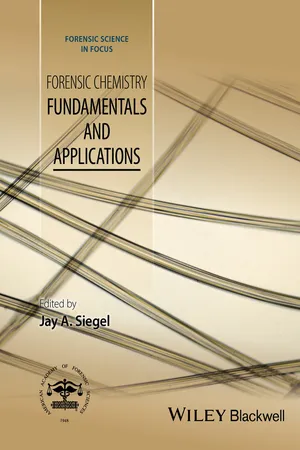1.1 Introduction
The aim of this chapter is to provide a brief overview of illegal drugs as they are controlled internationally, the specific nature of some of these compounds and how they can be analysed. The United Nations Office on Drugs and Crime (UNODC) provides an annual report (the World Drug Report) that collates international data to develop a picture of global drug markets in terms of production and use (UNODC, 2014a). The UNODC also provides an excellent international resource for information relating to analytical procedure and data interpretation that the reader is directed towards.
Generally speaking, controlled drug production and use tends to concentrate around four drugs or drug types: cannabis, opiates, cocaine and amphetamine-type substances. Each of these is discussed together with a brief overview of the emerging new psychoactive substances (NPS). These substances can also be categorized through their mechanisms of production as naturally occurring materials (cannabis), semi-synthetic materials derived from natural products (opiates and cocaine) and synthetic products (the amphetamine-type substances and the NPS).
Chemical substances controlled under International or National laws were used by between 190 and 324 million people worldwide in 2012 with 16–39 million users categorized as regular drug users (UNODC, 2014a). The prevalence of drug use varies regionally and the main problem drugs at the global level continue to be the opiates (notably heroin), followed by cocaine. For most of Europe and Asia, opiates continue to be the main problem drug; in South America, drug related treatment demand continued to be mainly linked to the abuse of cocaine; and in Africa the bulk of all treatment demand is linked to cannabis (UNODC, 2014a).
1.2 Law and legislation
Over a century ago, the international effects of the “national” Chinese heroin problem were addressed with the creation of The Shanghai Opium Commission in 1909. Out of this was born the first mechanism for the international legislation of drugs, The Hague Opium Convention of 1912. Countries party to this convention were required to implement domestic legislation restricting drugs to medical use. The Shanghai Opium Commission and the Hague Opium Convention were the catalysts for international drug control as it is today.
Half a century later, the United Nations (UN) created the first of three major international drug control treaties that are still in effect: the Single Convention on Narcotic Drugs 1961. As with any international convention, signatories are required to implement domestic legislation in accordance with the recommendations set out therein, and they are obligated to evaluate the policies against the international standard. More than 180 countries are party to the UN treaties. The UN regularly names the countries that have not signed the treaties and continually urges them to do so.
The 1961 Single Convention on Narcotic Drugs was formed out of a need to combine many different nations’ legislation on narcotic drugs into one primary instrument. It seeks to limit the manufacture, possession and use of drugs to science and medicine. Countries that are party to this convention are required to provide annual statistical returns and estimates for the use of, and need for, drugs covered by this convention. It also encourages international cooperation as a tool for fighting illicit international drug trafficking (UN, 1961; UNODC, nd).
The second major international treaty on drug control is the Convention on Psychotropic Substances 1971, which was written in response to the widening range of drugs of abuse. This convention establishes control over the use of psychotropic substances, including many synthetic drugs, based on their potential harm and therapeutic value (UNODC, nd; UN, 1971). A psychotropic substance is defined by the convention as “any substance, natural or synthetic, or any natural material in Schedule I, II, III or IV” of the convention (UN, 1971).
In contrast to the 1961 and 1971 treaties that seek to limit the trade in and use of controlled substances to legitimate scientific and medical purposes, the third major treaty was formed in an effort to deal with the growing problem of drug trafficking. The Convention Against the Illicit Traffic in Narcotic Drugs and Psychotropic Substances 1988 provides for the extradition of drug traffickers, and it offers provision against money laundering and the divergence of precursors (UNODC, 1988).
The effectiveness of this international drug control system is difficult to evaluate due to patchy data over the years; a concealed, illegal activity does not lend itself to simple quantitative monitoring. However, reports published annually by the UN now highlight the worldwide drug situation in yearly increments based in part on statistics provided by signatories to the major conventions.
On occasion, enough data are available to allow analysis of a drug trend over the last century. For example, The Shanghai Commission of 1909 was formed when the worldwide production of opium was estimated to be 30,000 metric tons, with 75% originating in China. Over one hundred years later, the global production has fallen by 80%, yet the world’s population has tripled. Therefore, in terms of opium, it is reasonable to conclude that the global drug problem is contained and the major international conventions are effective.
Chemicals are essential to the manufacture of narcotic drugs. They are an integral component in the case of synthetic drugs and are required for the processing of coca and opium into heroin and cocaine. Only marijuana, of the major illicit drugs of abuse, is available as a natural, harvested product.
Chemicals used in drug manufacture are divided into...
